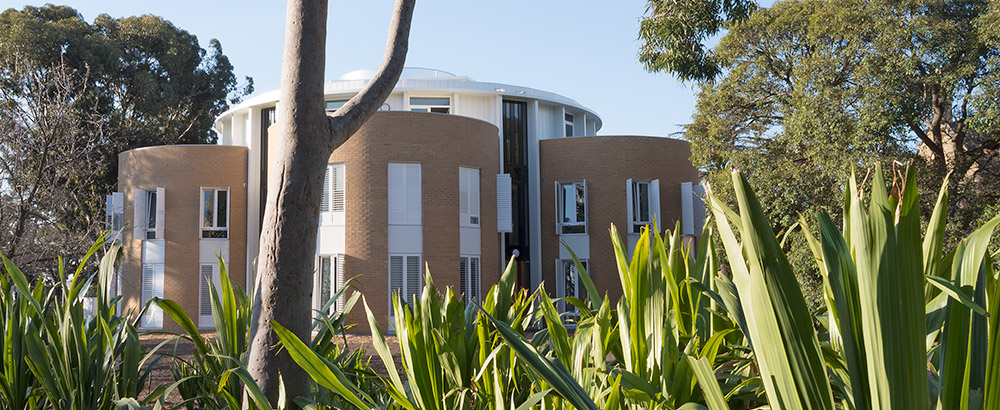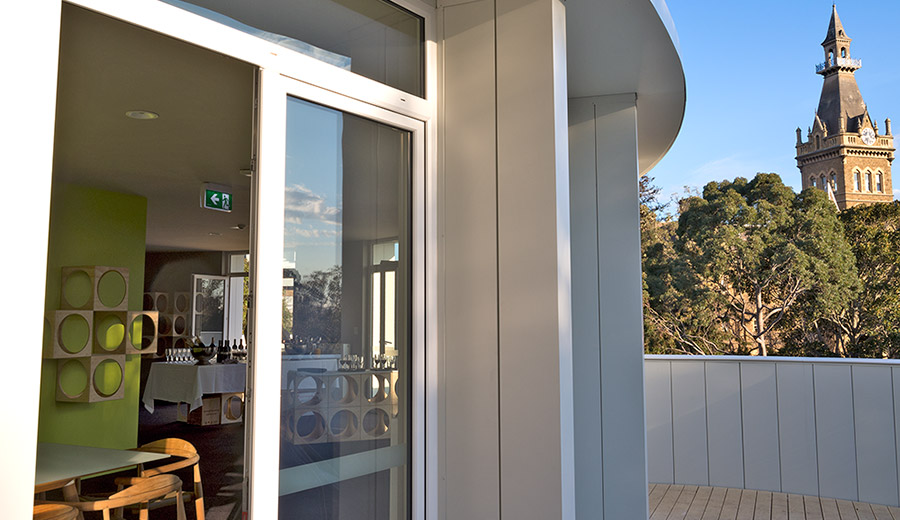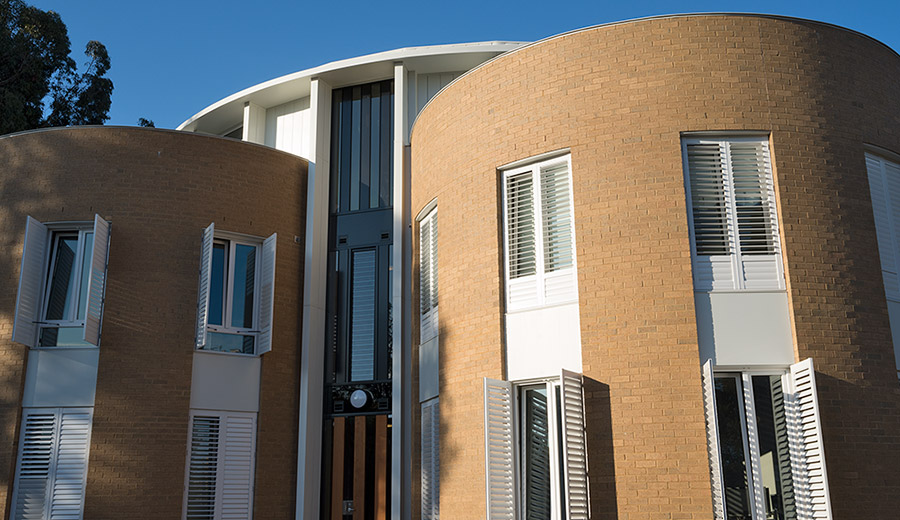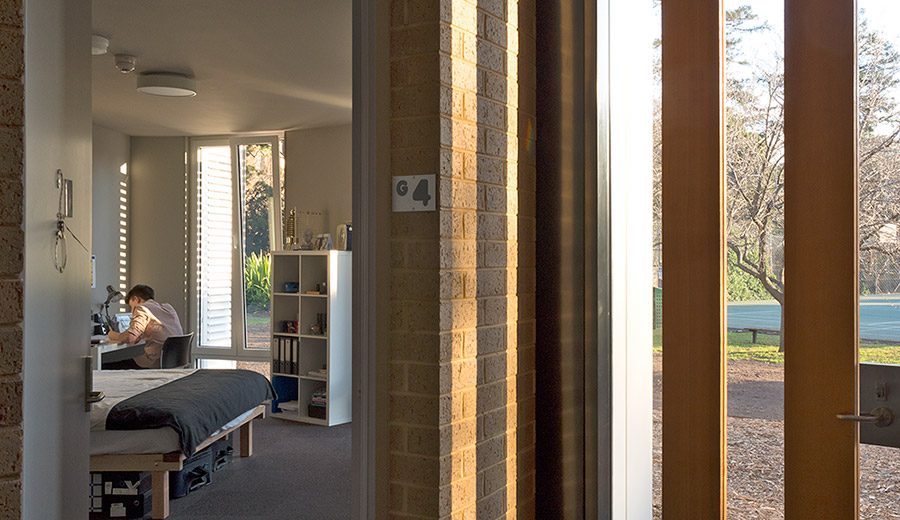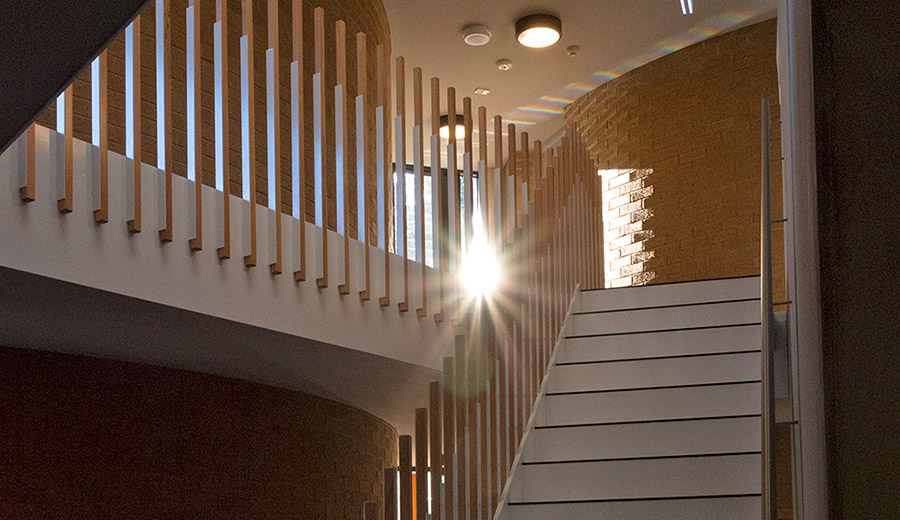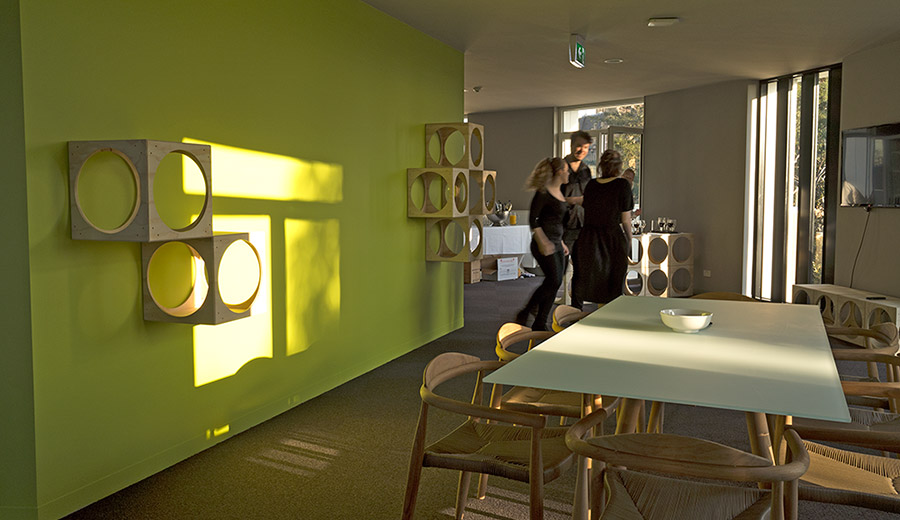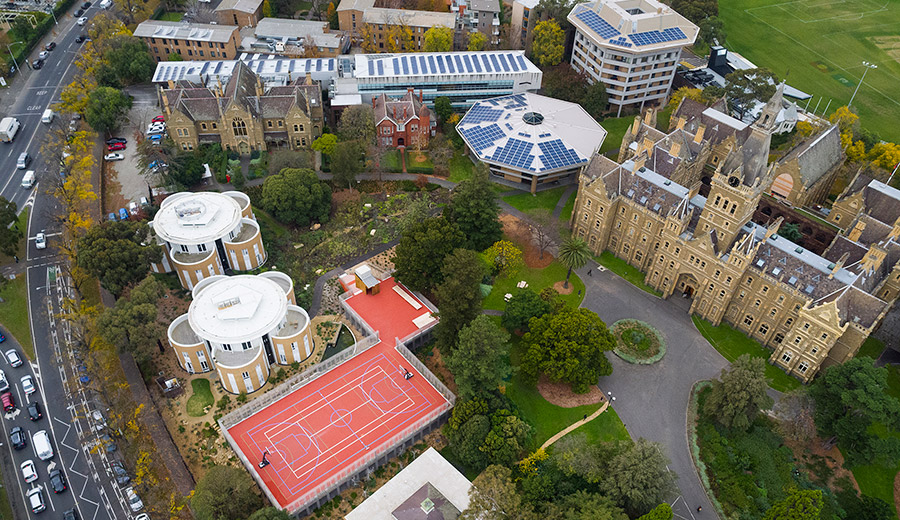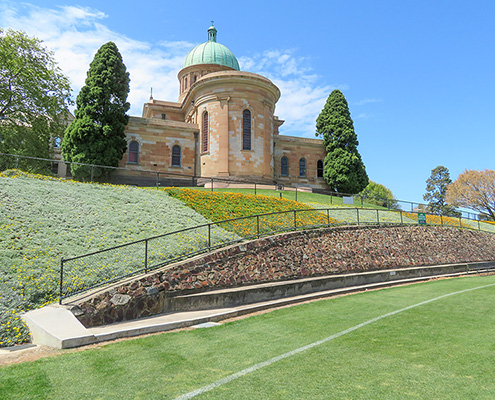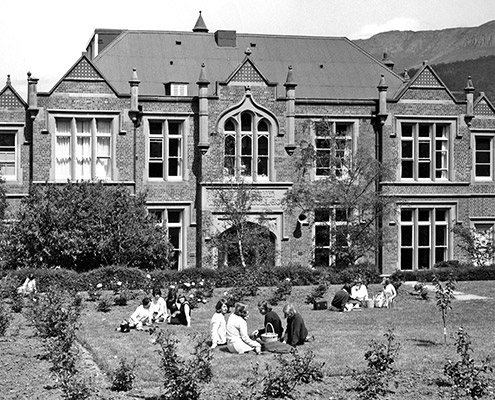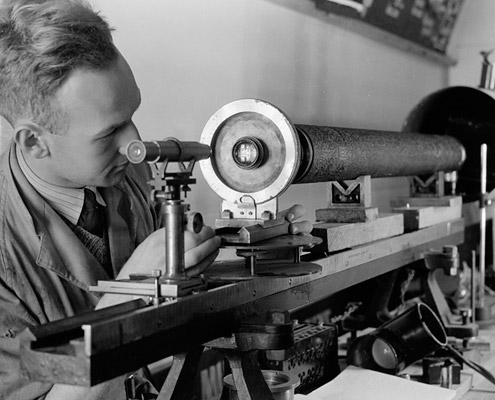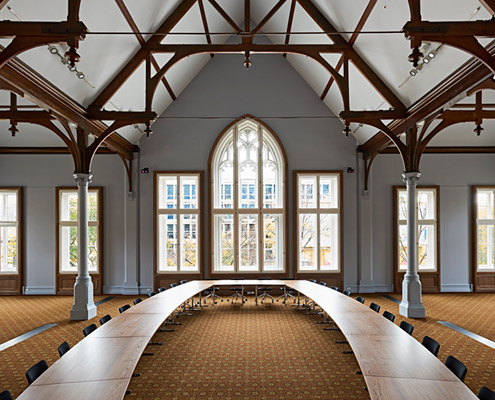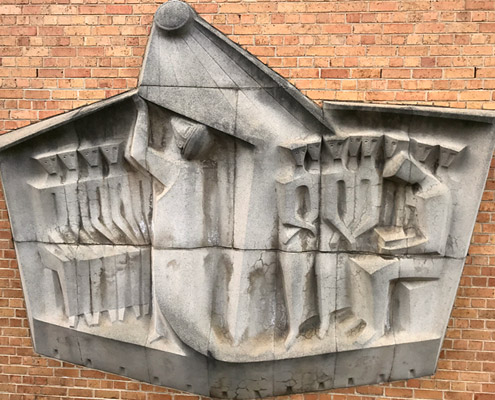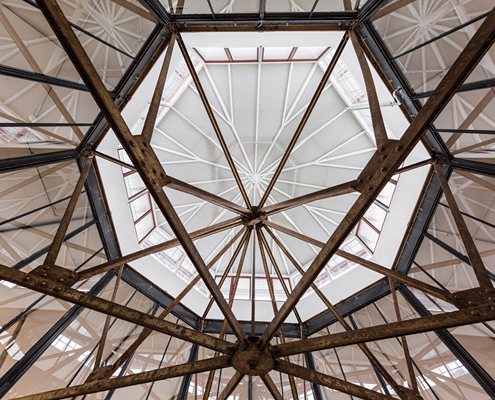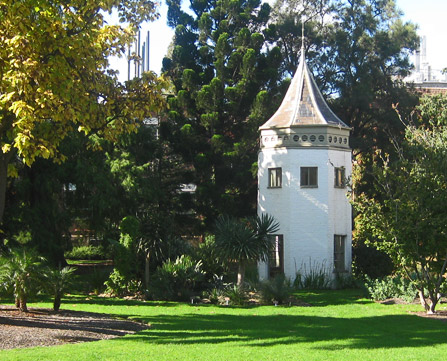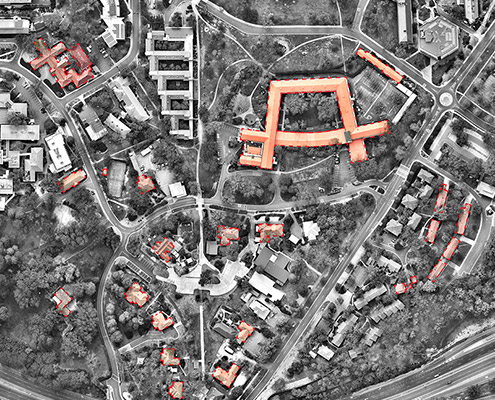
The new Graduate Centre at Ormond College joins a distinguished group of 1950s and 60s buildings in the grounds of the college, all based on geometric plan forms. The form, materiality and planning of the new building was developed as a response to its neighbours, several of which, like McCaughey Court (1968, Grounds, Romberg and Boyd) are hexagonal. The layout was also influenced by the students themselves.
Analysis of the other residential buildings and consultation with students led to the placing of the common areas on the top level of a central ‘drum’, surrounded by five roof-top balconies designed to be part of the shared space. The drum contains the circulation spaces and a pair of staircases. Ranged around the core are 20 student rooms on the two lower levels. A hierarchy of privacy is set up that begins with the most private spaces and moves up to the most public.
The student’s rooms are large enough to accommodate sleeping and studying, with some living area as well. All are ensuite and have three windows, each with a different aspect. The third floor common area is open plan around the core, providing flexible — and colourful — space that can be used for any activity. With our long term collaborators Design Sense, we developed a tough multi-use ‘cube’ that can be speedily configured as seats, tables or shelving — or all three at once.
Nestled amongst mature trees but adjacent to a busy road, the three-storey Graduate Centre manages to seem smaller in scale and quieter than might be expected. It’s a sympathetic building — highly responsive to its context and to its users.
In 2016, we completed a second, almost-identical, residential building alongside the Graduate Centre as part of the Wade Institute for entrepreneurial studies.
photos : Jane Joyce
aerial : John Gollings

